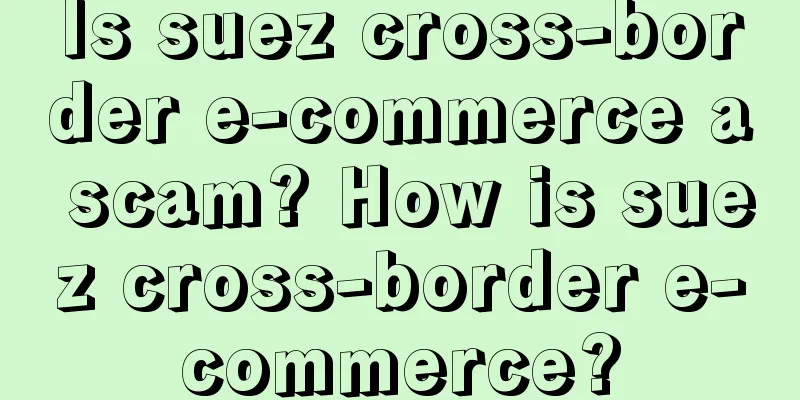The critical attack on the plush toys was caused by JellyCat's "madness"

Recently, JellyCat has become popular in the country. If you are a heavy JellyCat player, you may find this sentence a bit strange. JellyCat has already entered the domestic market, and there are a large number of experienced players. Why is it said that it has "become popular recently"? Because it has only been in the past two years that JellyCat has become truly "widely popular" and many ordinary consumers have "joined the circle". But if you are a JellyCat "marginalist", a stingy player like me who hesitates to spend more than double digits, the strange thing may be another thing: What on earth is so popular about a stuffed toy? Data shows that JellyCat's revenue has increased year by year in the past three years. In 2022 alone, it sold 1.3 billion yuan and its gross profit margin reached 800 million yuan. In the plush toy industry, which has long been labeled as having categories but no brands and cannot survive without IP, how does JellyCat achieve "all-age appeal" and become more popular the more expensive it is? In 1995, Pixar's "Toy Story" was released, and the toy culture industry showed unprecedented prosperity and prosperity. In this context, JellyCat was born. In 1999, brothers William Gatacre and Thomas Gatacre founded JellyCat in London, England. Then, small feet, dotted eyes, bracket-shaped smiles, elongated animal limbs and weakened hair, those plush toys that subvert traditional dolls and do not have "simulation" effects were born one after another from JellyCat's production line. Image source: Little Red Book @Jellycat In the doll market, this is called differentiation. It is important to find the right differentiation. But this only solves the problem of competitors. In positioning, determining the target population and consumption scenarios is more important than finding differentiation. You said that the main consumers in the doll market are children, so what is there to determine? No, no, no, there are differences between children. Let’s put it this way, if a seven or eight-year-old child pesters his parents to buy a stuffed toy, it may be because the child likes it; but if the stuffed toy is placed next to an infant, it is definitely the parent’s favorite. In other words, baby plush toys are not sold to babies, but to parents. JellyCat, which specializes in soothing toys for infants and young children, is targeting this group of parents. Different target groups have different ways of playing. Other plush toys focus on their appearance, but JellyCat focuses on quality and safety. All products have passed European toy safety standards and American material testing standards, and are soft and safe enough for newborns to touch. Of course, this does not mean that JellyCat does not have curling style and quality. On the contrary, in order to win the favor of parents, JellyCat curls just as fiercely, and launches new products almost every January and July (there have been some changes in recent years). After all, only a few people buy soothing toys for infants and young children, and even fewer are willing to pay high prices for them. JellyCat can only stay active and attractive by constantly launching new products. But judging from the later development context, focusing on infants and young children is definitely the most critical step for JellyCat's brand success. In 2014, JellyCat transformed into a gift brand for all age groups. Since then, JellyCat has not only further expanded its audience, but also further demonstrated its advantage of attracting adults at an early stage. Thus, while other plush toys are still trying to please children in various ways, JellyCat has already become a favorite of adults. Every young person who is willing to raise himself again after growing up is firmly bound to JellyCat. During last year’s Double 11, JellyCat surpassed Disney to become the top-selling plush fabric product. Many people believe that JellyCat's strength and popularity are related to its ugly, cute and healing product design. It sounds fine, but as we all know, in a country with a highly developed manufacturing industry, the back side of product design means constant imitation and plagiarism. This phenomenon is particularly serious in the toy market where there are categories but no brands. In 2015, Lego, the world's leading toy market leader, was copied by many knockoff building block brands in China. They copied Lego products 1:1 and then sold them at ultra-low prices, 10% to 30% of Lego's. But on the consumer side, the public is willing to pay for this kind of "value for money". Therefore, the real question behind JellyCat's popularity is how it competes with the copy-and-paste phenomenon that is prevalent in the toy manufacturing kingdom. By price? JellyCat is not cheap, ranging from two to three hundred yuan to thousands of yuan. Relying on quality? The quality of JellyCat products may not be better than that of domestic first-tier toy manufacturers. JellyCat has always been known for its high-end hand-sewing. The key point of high-end hand-sewing is not "high-end" but "hand-sewing", but it also means high labor costs, non-standardized products, and quality problems that may occur at any time. For example, on the Black Cat complaint platform and social platforms such as Xiaohongshu, many consumers said that the JellyCats they purchased had problems such as crooked heads, uneven feet, and unraveling threads. On the other hand, in China, which has accelerated its industrialization, although the market is still flooded with low-quality products, it is an indisputable fact that the quality of toy production has improved. Take Chenghai, Guangdong, known as the "Toy Capital", as an example. Its annual output value is as high as more than 50 billion yuan, accounting for one-third of the world's toys and acting as OEM for many brands. Let me ask you, if the quality is questionable, how can we attract a number of foreign big brands to actively purchase from us? Image source/Pixabay The prerequisite for JellyCat's success lies not in quality but in "scenario-based" itself. Do you remember the brand positioning of JellyCat we mentioned earlier? The so-called "gift brand for all ages" actually contains two keywords, all ages and gifts. How big is the gift-giving market? Think about the countless nights you tossed and turned over gifts, and count the money left in your pocket after holidays and anniversaries, and you will understand that gift consumption is a huge market. According to the data from the Gift Chamber of Commerce of the All-China Federation of Industry and Commerce, the scale of my country's gift market has exceeded 1.2 trillion yuan in 2020 and is still growing. Choosing the gift track is enough to imagine how big the market space of JellyCat is. This has also become another powerful weapon for JellyCat besides the crowd. First, it solves the problem of consumption scenarios. There is a phenomenon that more and more people now dislike plush dolls, especially those plush doll gifts that are of poor quality, large and take up space, and their final fate is basically the trash can. The JellyCat is the complete opposite. It's small, high quality and looks like the perfect gift. Note that it is "appears". The gift market is large and broad, and the products available for gift giving are numerous and diverse. Almost all necklaces, mobile phones and perfumes are worth buying. So, why should people choose JellyCat? This has to start with JellyCat's marketing. If Melatonin's success was due to its "only Melatonin as a gift" promotion, then JellyCat's success lies in its ability to increase activity during festivals with high-frequency advertising, as well as its ability to operate content and highly bind gift-giving scenarios. Whether targeting couples, mothers and babies, or beauty bloggers, all JellyCat content is aimed at gift-giving, such as giving a JellyCat to a girlfriend on Children's Day, giving a JellyCat to a pet on May 20th, etc. This innovative content marketing catches people's attention and makes people unconsciously think of and choose JellyCat when giving gifts. Of course, the most important thing is that JellyCat is not cheap at all as a gift. With a gift number tag in hand, even the high price becomes its advantage. That’s the second point, making the price reasonable. The most important thing about gift giving is that the price should be reasonable and the cost should be controllable. Otherwise, if it is too cheap, it will be embarrassing, and if it is too expensive, it will be painful. The JellyCat at around 300 yuan is just right. If you meet a super loyal friend, you can directly stack the extra gifts and give away several of them. After all, judging from the update speed of JellyCat dolls, even if they only give away a few every year, they can be given away for several years in a row. In the past two years, the scenario for purchasing JellyCat has changed from gift giving to self-purchase. This is actually related to the fact that JellyCat anthropomorphizes and scenes the dolls. Like Disney, JellyCat tailors a unique personality and story background for each doll, making them transcend the scope of simple commodities and transform them into living beings with unique souls. A shrimp named Sheldon, a poodle named Georgiana, a frog prince named Fabian... They may be shy, lively, silly or witty, in short, in two words, "human-like". Young people under high pressure have begun to buy JellyCats to provide deep emotional companionship and seek spiritual "healing." In their eyes, JellyCats are like their own pets, children, friends, and themselves. For example, the "Mr. Qie" with dark circles under his eyes but a smile on his face looks like a worker who has been working all night and has to get up early for work; the feather-ruffled penguin is exactly the same as the "crazy" state in our daily life. Adults find thousands of versions of themselves in JellyCat. Unfortunately, I can’t afford thousands of JellyCats. After all, JellyCat is really expensive. Therefore, in order to avoid getting too deeply involved, some people on Douban even set up a "JellyCat Quit Mutual Aid" group to try to persuade themselves to buy less. When I clicked in, I found that half of them were promoting something new, and the other half felt like they were promoting something new too. So, the young people who gritted their teeth and bought the product, coexisting with self-blame and happiness, began to try to convince themselves. JellyCat increases its price every now and then, and the more expensive it is, the more popular it is, and the more popular it is, the more outrageous the price increases. In the long run, this makes more money than financial products. JellyCat publishes a "retirement list" every year. If you don't buy it now, you will have to pay a high price later. The sooner you buy, the sooner you can enjoy it. In the future, the products may appreciate in value and become out-of-print products. So, all the dissuading can be summed up in one word: buy!!! |
<<: Besides influencer marketing and advertising bombardment, the third way of marketing
Recommend
Fight against counterfeiting and quit the Internet, does this era no longer need big anchors?
The live streaming industry has been booming in re...
Show your face for five seconds and count money for two hours, 6 cases reveal how brands seize the summer season?
Co-branding is one of the most commonly used metho...
The number of pets exceeds that of infants and young children. How can brands seize this wave of dividends?
As the number of pets is about to surpass that of ...
Mini Program e-commerce enters "junk time"
Driven by the wave of digitalization, mini-program...
How to write the monthly report for January?
It is the end of January again. January is a speci...
Meituan Group Buying x Hu Ge: How to create a spokesperson advertisement for the whole nation?
This article mainly introduces how Meituan Group B...
It hurts! When you, who are just data, return to your hometown...
The Spring Festival is coming soon. Many students ...
How to make cost-effective content marketing more effective than advertising? Understand the difference between the two in one article
This article starts from the underlying logic of t...
What to do if Amazon restricts replenishment? How to avoid replenishment restrictions?
When opening a store on Amazon, replenishment is a...
What products are mainly sold on eBay? What products are good to sell?
Often, consumers will change their shopping habits...
What are the advantages and disadvantages of independent websites? What are they?
An independent website is different from a third-p...
Review the second half of 2022 and gain insights into the market in the report
In the past two years, the epidemic has "run&...
Capacity growth of private domain operators: How to formulate effective private domain operation strategies
How can private domain operators formulate strateg...
618: Short dramas promoting products, a new battlefield between Alibaba and Pinduoduo
This article mainly discusses the phenomenon of e-...
Douyin Live Service adds "free trial", how can restaurant owners make the most of their small investment?
As the restaurant industry faces global challenges...









